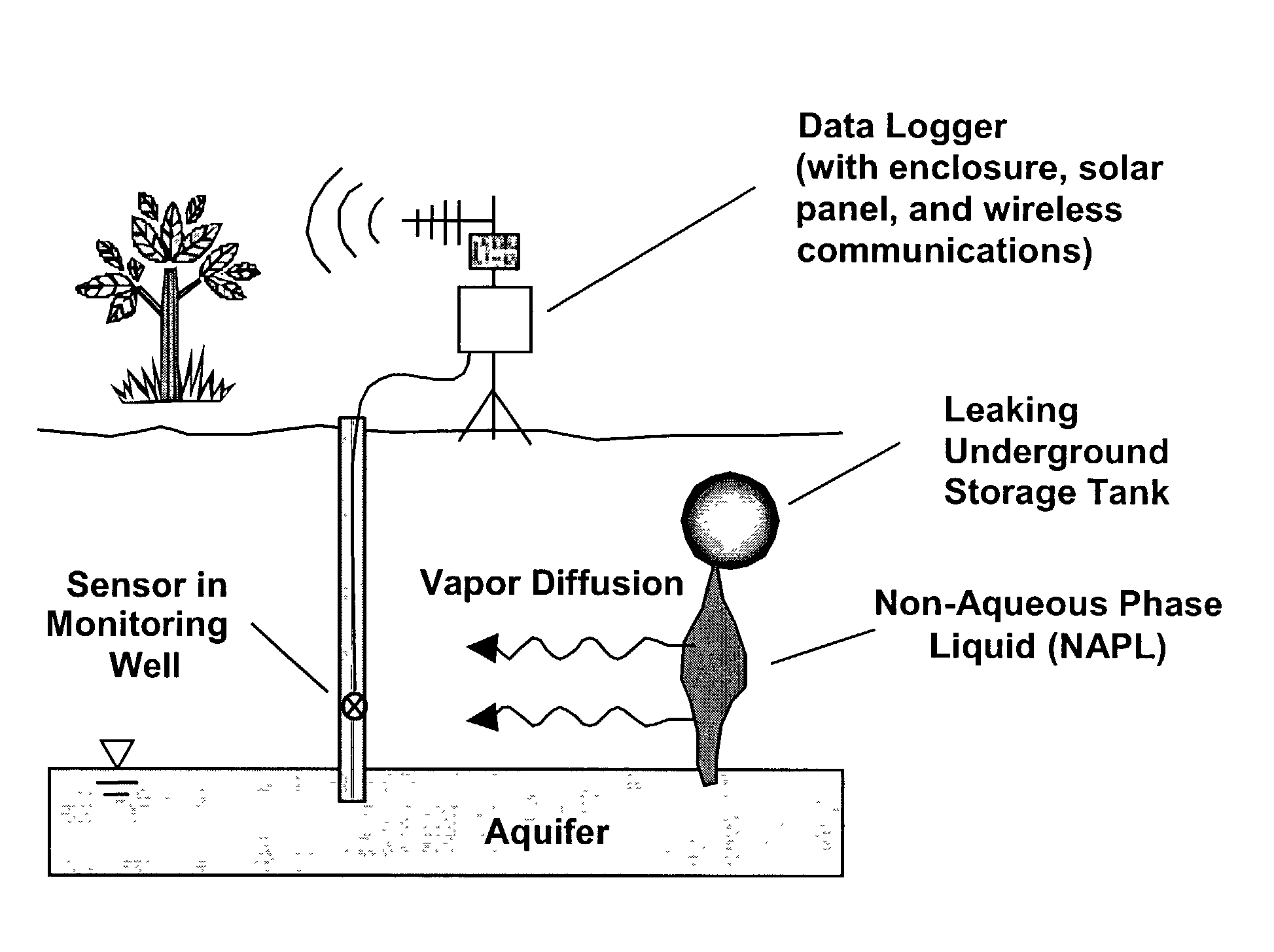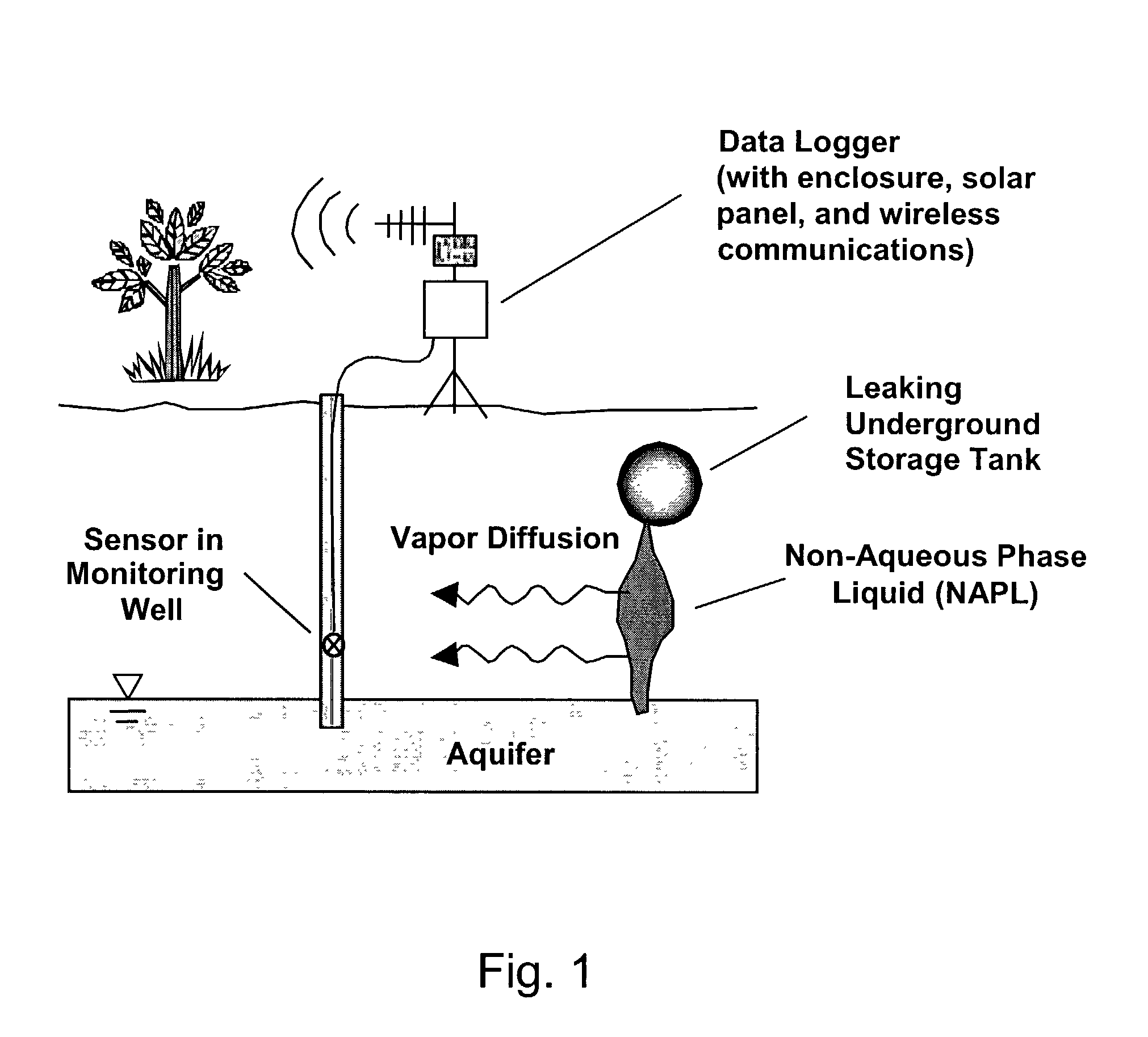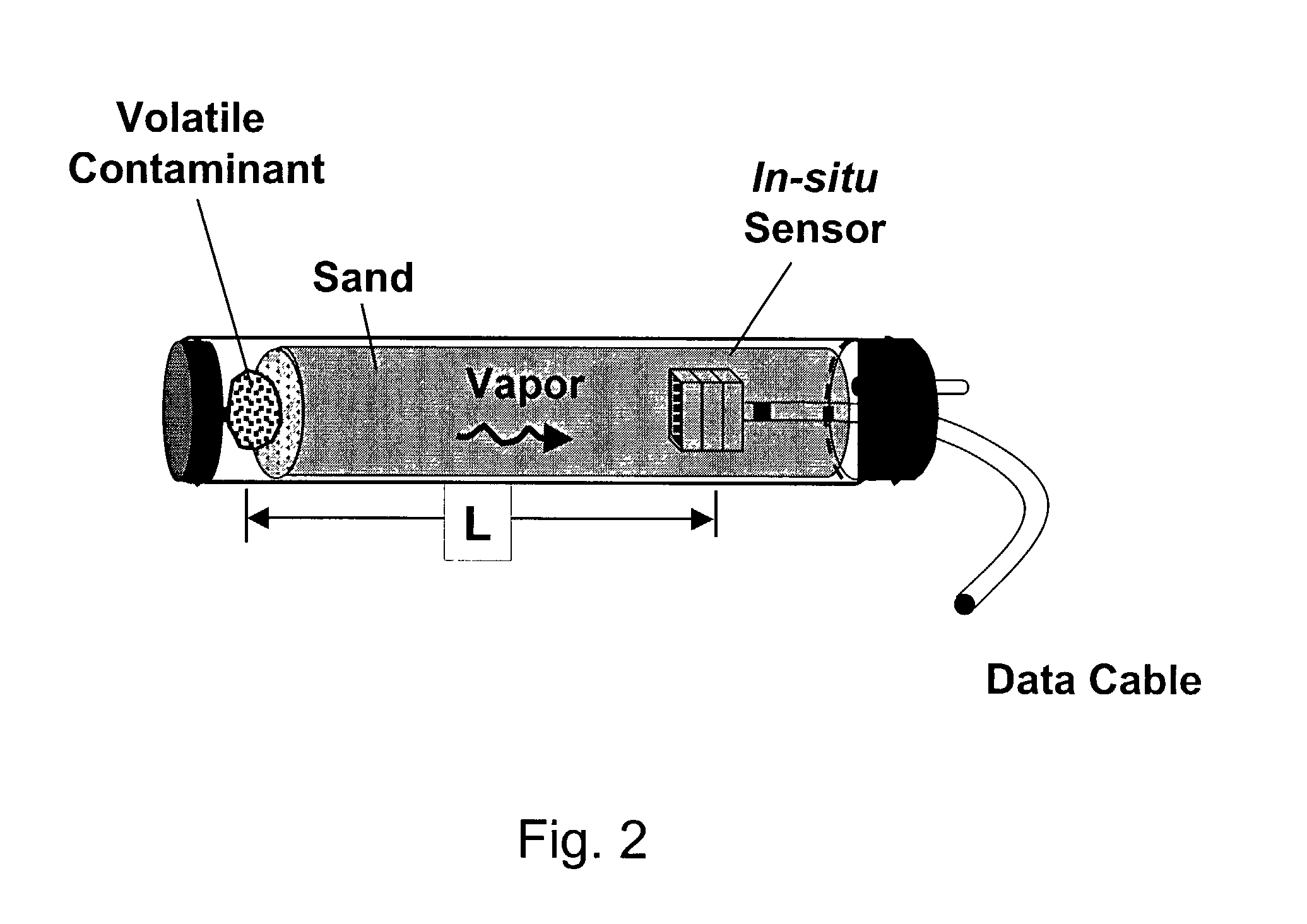Methods for characterizing subsurface volatile contaminants using in-situ sensors
a volatile contaminants and insitu sensor technology, applied in the direction of mechanical means, process and machine control, specific gravity measurement, etc., can solve the problems of inability to accurately characterize the integrity of off-site analysis of contaminated samples, limited sampling and analytical techniques, and high cost of current methods
- Summary
- Abstract
- Description
- Claims
- Application Information
AI Technical Summary
Benefits of technology
Problems solved by technology
Method used
Image
Examples
Embodiment Construction
[0041]The present invention relates to an integrated system for performing in-situ monitoring, characterization, and automated, remediation of subsurface volatile contaminants in an optimal and cost-effective way. The present invention also relates to an in-situ, real-time waterproof in-situ microsensor that detects and quantitatively characterizes volatile organic and inorganic compounds in soil, wells, or groundwater. The words “vapor” and “gas” are used interchangeably herein. Similarly, the acronym VOC, which stands for Volatile Organic Compound, is intended herein to also encompass all inorganic volatile compounds (VCs) and other solvents, such as toxic chemicals, explosives, organic compounds having low volatility, and toxic gases.
[0042]The terms “in-situ sensor” and “in-situ microsensor” are equivalent, and refer to any robust, rugged, and reliable chemical sensing device that can be emplaced subsurface (e.g., in a well or in direct contact with soil) and can measure in real-...
PUM
 Login to View More
Login to View More Abstract
Description
Claims
Application Information
 Login to View More
Login to View More - R&D
- Intellectual Property
- Life Sciences
- Materials
- Tech Scout
- Unparalleled Data Quality
- Higher Quality Content
- 60% Fewer Hallucinations
Browse by: Latest US Patents, China's latest patents, Technical Efficacy Thesaurus, Application Domain, Technology Topic, Popular Technical Reports.
© 2025 PatSnap. All rights reserved.Legal|Privacy policy|Modern Slavery Act Transparency Statement|Sitemap|About US| Contact US: help@patsnap.com



